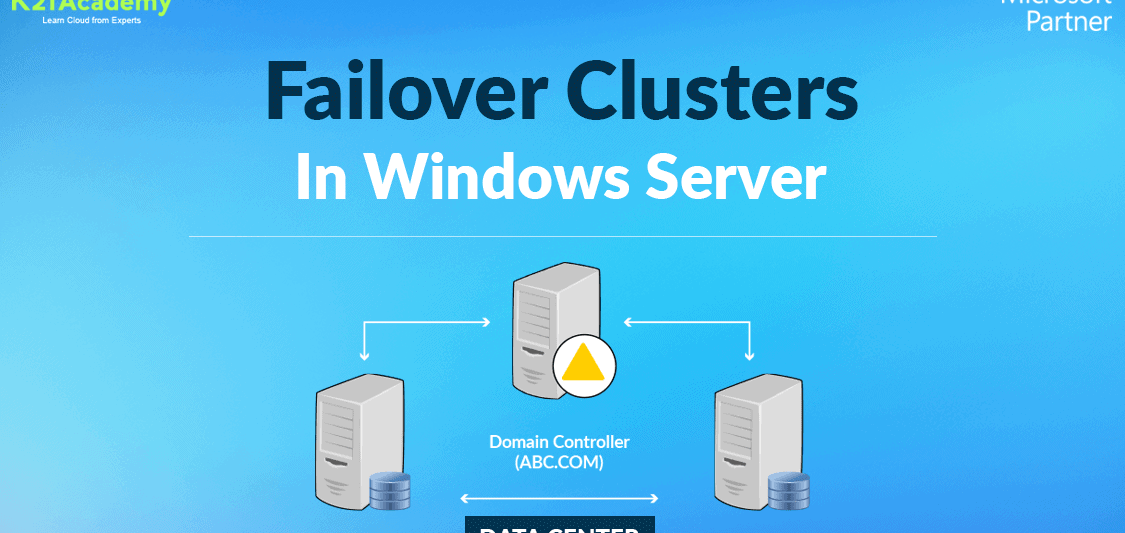
Failover Clustering
Failover clustering is a high-availability solution that allows multiple servers (nodes) to work together as a single system, providing redundancy and ensuring that services remain available even in the event of a hardware or software failure. This technology is commonly used in environments where uptime is critical, such as data centers, financial institutions, and healthcare systems.
1. Understanding Failover Clustering
- Definition: A failover cluster consists of two or more servers configured to work together. If one server fails, another server takes over its workload, minimizing service disruption.
- Key Components:
- Nodes: Individual servers that make up the cluster.
- Shared Storage: A common storage solution accessible by all nodes in the cluster, ensuring data availability.
- Cluster Management Software: Tools that monitor the health of the nodes and manage failover processes.
2. Benefits of Failover Clustering
- High Availability: Ensures that applications and services remain accessible even if one or more servers fail.
- Automatic Recovery: Provides automatic failover of services to another node in the cluster without requiring manual intervention.
- Load Balancing: Distributes workloads across multiple nodes, optimizing resource utilization and improving performance.
- Simplified Maintenance: Allows for maintenance tasks on individual nodes without taking the entire system offline.
3. Common Use Cases
- Database Systems: Failover clustering is often used with database systems (like Microsoft SQL Server) to ensure continuous access to critical data.
- Virtualization: In virtual environments, failover clustering can ensure that virtual machines (VMs) remain operational even if the host server fails.
- File and Print Services: Ensures that shared file and print services remain available to users, even during hardware failures.
4. Key Features of Failover Clustering
- Health Monitoring: Continuously monitors the health of nodes and services, automatically initiating failover when a failure is detected.
- Cluster Resource Management: Manages cluster resources, ensuring that they are allocated effectively and failover processes are executed smoothly.
- Quorum Configuration: Implements a quorum mechanism to prevent split-brain scenarios, where two nodes believe they are the primary.
- Support for Multiple Applications: Can support a wide range of applications and services, including web servers, application servers, and file servers.
5. Implementing Failover Clustering
5.1 Prerequisites
- Hardware: Ensure you have compatible servers and storage solutions (e.g., SAN or NAS) for shared storage.
- Operating System: Use a version of Windows Server or Linux that supports clustering features.
- Network Configuration: Properly configure networking to ensure nodes can communicate with each other and with clients.
5.2 Installation Steps
Install Failover Clustering Feature:
- On Windows Server, add the Failover Clustering feature through the Server Manager.
- For Linux, use the clustering solution available (e.g., Pacemaker).
Validate Configuration:
- Run the Cluster Validation Wizard to check hardware and software compatibility and ensure proper configuration.
Create a Cluster:
- Use the clustering management tool to create a new cluster, adding nodes and configuring shared storage.
Configure Cluster Roles:
- Set up and configure roles (e.g., SQL Server, file shares) that will run on the cluster.
Testing:
- Conduct failover testing to ensure that services migrate correctly between nodes during a failure.
6. Best Practices for Failover Clustering
- Regular Testing: Periodically test failover procedures to ensure they work as expected and staff are familiar with the process.
- Monitoring: Use monitoring tools to track the health of the cluster and receive alerts for potential issues.
- Documentation: Maintain detailed documentation of the cluster configuration, processes, and procedures for troubleshooting and maintenance.
- Updates and Patching: Regularly update the operating system and applications to ensure security and stability.
